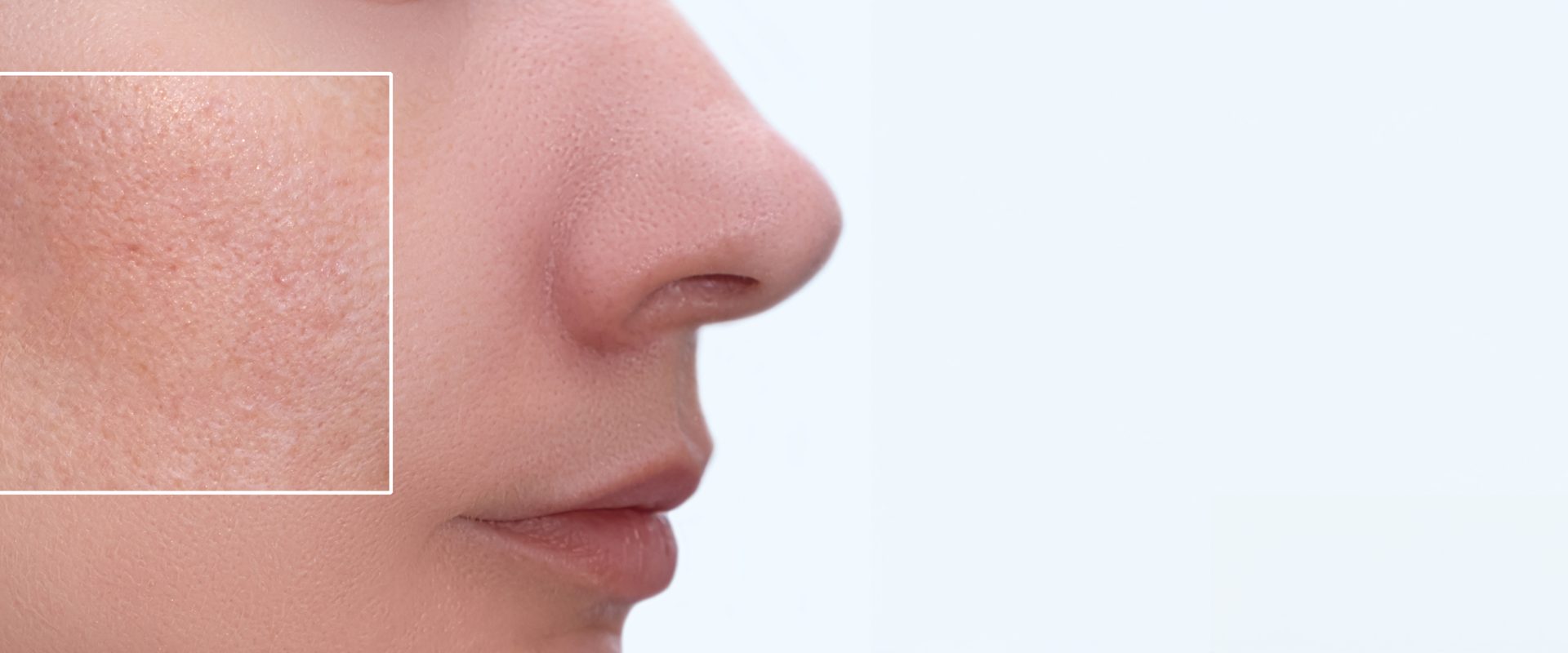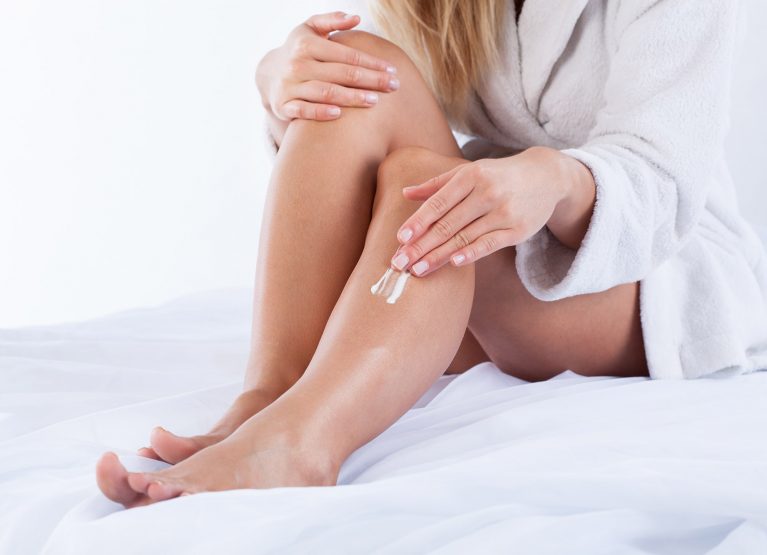Shakespeare recited: With mirth and laughter let old wrinkles come: the employ of two of the 9 ceramides discovered hitherto are exceptional to defeat radically asphyptic skin
Abstract: Asphyptic skin at whichever age depends on the difficulty of cell breathing and oxygen cell transport. The result is irrevocably the perennial situation of asphyptic (associated too often with atopic skin) that is difficult to understand to discover a method of getting it off. A cleansing mousse-gel with no scrubbing or peeling agents is proposed with the copresence of two special ceramides (III and VI) and detersives.
Results a are appreciable after only 8 applications in 4 days at whichever age.
Keywords: asphyptic skin, atopic skin, ceramide III, ceramide VI,desquamatory, alpha bisabolol.
Introduction
Asphyptic skin in Man means that Epidermal Cells that usually must breathe,.although fiction seems like skin cells breathe but it is not recognizable. And the presence of oxygen is a vital element to wear young and healthy skin. The production of energy inside the cellular is generated thanks to an exchange process. This feed-back consists of an interactive mechanism for reception or input (cell nutrition) and an response or output mechanism (transformation of organic matter into energy).The blood of Human organism, as wellknow, is the one that deals with transporting oxygen to all corners of all the body to supply it with fuel, facilitating chemical reactions and promoting the release of toxins and other harmful agents. But this natural gear that works perfectly sometimes fails and does not always work at full performance.With the passage of time, the contribution of oxygen in the skin decreases considerably and is in our face and our skin where it looks most. But, in addition, the performance of external agents, such as poor diet, stress, inappropriate sun exposure, lack of cosmetic care and environmental pollution do represent the real culprits of the asphyptic skin, a very great embarassing concern!. This lack, this physiological failure has an impact on the deepest layers of the skin, where oxygen levels are even more scarce and as a consequence we can say that the skin is “”suffocation”.
These are the real rsponsible of the phenomenon of the asphyptic skin (1)
Imbalance in the production of epicutaneous emulsion, formed by substances that come from epidermal keratinization, sebaceous excretion and sweat, these lead to serious dehydration problems, especially in the most sensitive areas of the face, which can translate into a sign of deep dehydration, peeling and pruritus.(2-17). It has been also observed that this type of skin has an excess of sebaceous secretion, which blocks and occludes the Pilosebaceous hole producing comedones and microquystems. There is also atrophy of blood capillaries and lymphatic network, there is disorder in the elimination of toxins and undo substances, which gives way to a hectino -looking skin. A possible solution could be the application of adequate cosmetics and aesthetic treatments. The cosmetic, constant and continuous care of asphyctic skin is fundamental and the results can be seen in the short term. Here the vademecum to follow in order to take care and improve this type of skin. Instead of the habitual usage of superficial peelings and/or exfoliants once or twice a week based on highest percentages of alpha, betha, gamma and delta hydroxyacids, a newest cosmetic item is seriously recommended, based on cleansing agents and detersives Besides the presence of cocamidopropylbetaine and disodium cocoamphoacetate as detergents agnts in the very ligh cleaning mousse gel there are two of the most important 9 known ceramides :
ceramide 3:
The ceramide 3 consists of sphingolipids composed of an omega-oxyacid and an amino alcohol (sfingosine). They are normally present in the corneous layer of normal skin (they make up 40-60% of total lipids) and their quantity reduces with time and are almost abest in asphyptic skin at all. Ceramide 6 indeed reinforces the skin`s natural protective barrier and normalizes the skin`s natural desquamatory process. This natural ingredient is strongly recommended for use in all body, eye, face, neck, hand, and foot care products. It is important to stress that the lotion the AA created comprehend two types of regular ingredients, albeit under shape of isomers:
delta panthenol
alpha bisabolol
besides jojoba oil as apaisant agent.
The results of employing this type of detergent and mildly peeling mousse (twice a day with tepid water and time of pose of almost 20 minutes) are miracolously evident. Skin becomes glamorous and silky, even in women 70-80 y. old and youngest (in prepuberthal phase).
Results, discussions and conclusions
The AA have demonstrated that 4 days of peeling using this gentle peeling mousse-jelly (2/day) is more than sufficient to transform an asphptic and atopic skin in a normal and velvet skin, the famous peach-peel youngest cutis.
The AA have prayed three volunteers (19 y, 27 y, 71 y., 85 y. old) (A and B were men and C and D women) to undergo the experimentation.
Aknowledgements:
the experimentations have been carried out thanks the usage of a mousse and these are the chief ingrdients:
disodium laureth sulfosuccinate
cocamydopropyl betaine
disodium cocoamphodiacetate
cocamide DEA
hydrolized hyaluronic acid
alpha bisabolol
niacinamide
deltha panthenol
silver citrate
chlorexidine diglunoate
ceramide VI
Ceramide III
Phytosphingosine
Cholesterol
And some other less important but indispensable.
References
-
Darrow, D. C., Yannet, H.: The changes in distribution of body water accompanying increase and decrease in extracellular electrolytes. Journ. Clin. Invest. 1935: 14: 266.
-
Archer CB. The pathophysiology and clinical features of atopic dermatitis. Williams HC, editor. Atopic dermatitis. Cambridge: Cambridge University Press; 2000.
-
Williams HC, Wüthrich B. The natural history of atopic dermatitis. Williams HC, editor. Atopic dermatitis. Cambridge: Cambridge University Press; 2000.
-
Williams HC. What is atopic dermatitis and how should it be defined in epidemiological studies? Williams HC, editor. Cambridge: Cambridge University Press; 2000.
-
Hanifin JM, Rajka G. Diagnostic features of atopic eczema. Acta Derm Venereol (Stockh) 1980;92:44–7.
-
Williams HC. The future research agenda. Williams HC, editor. Atopic dermatitis. Cambridge: Cambridge University Press; 2000.
-
Williams HC, Forsdyke H, Boodoo G, Hay RJ, Burney PGF. A protocol for recording the sign of visible flexural dermatitis. Br J Dermatol 1995;133:941–9.
-
Herd RM. The morbidity and cost of atopic dermatitis. Williams HC, editor. Atopic dermatitis. Vol. 85–95. Cambridge: Cambridge University Press; 2000.
-
Williams HC, Robertson CF, Stewart AW, on behalf of the ISAAC Steering Committee. Worldwide variations in the prevalence of atopic eczema symptoms. J Allergy Clin Immunol 1999;103:125–38
-
Williams HC. Is the prevalence of atopic dermatitis increasing? Clin Exp Dermatol 1992;17:385–91.
-
Herd RM, Tidman MJ, Prescott RJ, Hunter JAA. Prevalence of atopic eczema in the community: the Lothian atopic dermatitis study. Br J Dermatol 1996;135:18–9
-
Emerson RM, Williams HC, Allen BR. Severity distribution of atopic dermatitis in the community and its relationship to secondary referral. Br J Dermatol 1998;139:73–6.
-
Dotterud LK, Kvammen B, Lund E, Falk ES. Prevalence and some clinical aspects of atopic dermatitis in the community of Sør-Varanger. Acta Derm Venereol 1995;75:50–3. [PubMed]
-
Herd RM, Tidman MJ, Prescott RJ, Hunter JAA. The cost of atopic eczema. Br J Dermatol 1996;135:20–3.
-
Su JC, Kemp AS, Varigos GA, Nolan TM. Atopic eczema: its impact on the family and financial cost. Arch Dis Child 1997;76:159–62.
-
Schultz-Larsen F, Holm NV, Henningsen K. Atopic dermatitis. A genetic-epidemiological study in a population-based twin sample. J Am Acad Dermatol 1986;15:487–94. Williams HC. Atopic eczema – why we should look to the environment. BMJ 1995;311:1241–2.]
-
Williams HC, Strachan DP, Hay RJ. Childhood eczema: disease of the advantaged? BMJ 1994;308:1132–5
Publicated on Scientific Paper , Poland, By Prof. Dott Martini Lorenzo, Dip BCF ; University of Siena, Avril 2024
Traduzione ENG/ITA
Shakespeare recitava: Con allegria e risa vengano le vecchie rughe: l’impiego di due delle 9 ceramidi finora scoperte sono eccezionali per sconfiggere la pelle radicalmente asfittica
Abstract: Pelle asfittica a qualsiasi età dipende dalla difficoltà di respirazione cellulare e di trasporto cellulare dell’ossigeno. Il risultato è irrevocabilmente la perenne situazione di asfissia (associata troppo spesso alla pelle atopica) che è difficile da comprendere per trovare un metodo per toglierla. Viene proposta una mousse-gel detergente senza agenti scrubbing o peeling con la compresenza di due ceramidi speciali (III e VI) e detersivi. I risultati sono apprezzabili dopo sole 8 applicazioni in 4 giorni a qualsiasi età.
Parole chiave: pelle asfittica, pelle atopica, ceramide III, ceramide VI, desquamatorio, alfa bisabololo.
Introduzione
Pelle asfittica nell’uomo significa che le cellule epidermiche che di solito devono respirare, anche se la finzione sembra che le cellule della pelle respirino ma non è riconoscibile. E la presenza di ossigeno è un elemento vitale per indossare una pelle giovane e sana. La produzione di energia all’interno della cellula viene generata grazie ad un processo di scambio. Questo feed-back consiste in un meccanismo interattivo per la ricezione o l’input (nutrizione cellulare) e un meccanismo di risposta o output (trasformazione della materia organica in energia). Il sangue dell’organismo umano, come ben sappiamo, è quello che si occupa di trasportare l’ossigeno in tutti gli angoli di tutto il corpo per rifornirlo di carburante, facilitando le reazioni chimiche e favorendo il rilascio di tossine e altri
agenti nocivi. Ma questo ingranaggio naturale che funziona perfettamente a volte si guasta e non sempre funziona a pieno regime.
Con il passare del tempo, l’apporto di ossigeno nella pelle diminuisce considerevolmente ed è nel nostro viso e nella nostra pelle dove appare di più. Ma, in più, le prestazioni degli agenti esterni, come la cattiva alimentazione, lo stress, l’esposizione inappropriata al sole, la mancanza di cure cosmetiche e l’inquinamento ambientale rappresentano i veri colpevoli della pelle asfittica, una preoccupazione davvero imbarazzante!. Questa mancanza, questo cedimento fisiologico si ripercuote sugli strati più profondi della pelle, dove i livelli di ossigeno sono ancora più scarsi e di conseguenza possiamo dire che la pelle è “soffocata”.
Queste sono le vere responsabili del fenomeno della pelle asfittica (1)
·Squilibrio nella produzione di emulsione epicutanea, formata da sostanze che provengono da cheratinizzazione epidermica, escrezione sebacea e sudore, questi portano a gravi problemi di disidratazione, soprattutto nelle zone più sensibili del viso, che possono tradursi in un segno di profonda disidratazione, desquamazione e prurito. (2-17). E’ stato inoltre osservato che questo tipo di pelle presenta un eccesso di secrezione sebacea, che blocca e occlude il foro pilosebaceo producendo comedoni e microchistemi. C’è anche atrofia dei capillari sanguigni e della rete linfatica, c’è disordine nell’eliminazione delle tossine e delle sostanze di disfacimento, che lascia il posto a una pelle dall’aspetto di etto. Una possibile soluzione potrebbe essere l’applicazione di cosmetici e trattamenti estetici adeguati. La cura cosmetica, costante e continua della pelle asfittica è fondamentale e i risultati si vedono nel breve periodo. Ecco il vademecum da seguire per prendersi cura e migliorare questo tipo di pelle. Invece dell’uso abituale di peeling superficiali e/o esfolianti una o due volte alla settimana a base di altissime percentuali di alfa, betha, gamma e delta idrossiacidi, si consiglia seriamente un prodotto cosmetico più recente, a base di detergenti e detersivi Oltre alla presenza di cocamidopropilbetaina e cocoanfoacetato disodico come detergenti nella leggerissima mousse gel detergente, ci sono due delle 9 ceramidi conosciute più importanti:
Ceramide 3:
La ceramide 3 è costituita da sfingolipidi composti da un omega-ossiacido e da un amminoalcol (sfingosina). Sono normalmente presenti nello strato corneo della pelle normale (costituiscono il 40-60% dei lipidi totali) e la loro quantità si riduce con il tempo e sono quasi del tutto migliori nella pelle asfittica. La ceramide 6 rinforza infatti la naturale barriera protettiva della pelle e normalizza il naturale processo desquamatorio della pelle. Questo ingrediente naturale è fortemente raccomandato per l’uso in tutti i prodotti per la cura del corpo, degli occhi, del viso, del collo, delle mani e dei piedi. È importante sottolineare che la lozione creata dall’AA comprende due tipi di ingredienti regolari, anche se sotto forma di isomeri:
Delta Pantenolo
Alfa bisabololo
oltre all’olio di jojoba come agente apaisant.
I risultati dell’utilizzo di questo tipo di detergente e della mousse leggermente peeling (due volte al giorno con acqua tiepida e tempo di posa di quasi 20 minuti) sono miracolosamente evidenti. La pelle diventa glamour e setosa, anche nelle donne di 70-80 anni e più giovani (in fase prepubertale).
Risultati, discussioni e conclusioni
Gli AA hanno dimostrato che 4 giorni di peeling con questa mousse-gelatina peeling delicata (2/giorno) sono più che sufficienti per trasformare una pelle asfatica e atopica in una pelle normale e vellutata, la famosa cute più giovane a buccia di pesca.
L’AA ha pregato tre volontari (19 anni, 27 anni, 71 anni, 85 anni) (A e B erano uomini e C e D donne) per sottoporsi alla sperimentazione.
Ringraziamenti:
Le sperimentazioni sono state effettuate grazie all’utilizzo di una mousse e questi sono i principali ingredienti:
disodico laureth sulfosuccinato
cocamydopropyl betaina
di cocoanfodiacetato disodico
cocamide DEA
acido ialuronico idrolizzato
Alfa bisabololo
Niacinamide
Pantenolo Deltha
citrato d’argento
clorexidina diglunoato
ceramide VI
Ceramide III
Fitosfingosina
Colesterolo
E qualche altro meno importante ma indispensabile.




